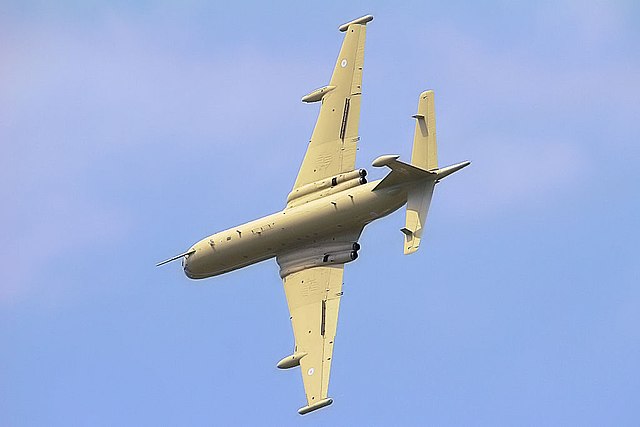Number 120 Squadron or No. CXX Squadron is a squadron of the Royal Air Force which was established as a Royal Flying Corps unit late in World War I, disbanded a year after the end of the war, then re-established as a RAF Coastal Command squadron during World War II. Although disbanded again a month after Victory in Europe Day, during and after World War II it operated almost continuously, with maritime patrol aircraft; most recently with the Hawker Siddeley Nimrod, based at RAF Kinloss in Scotland until the type's withdrawal in March 2010. The squadron was disbanded again the following year. No. 120 Squadron stood up again in April 2018 at RAF Lossiemouth and became the first squadron to be equipped with the Boeing Poseidon MRA1 anti-submarine warfare (ASW) aircraft on 31 October 2019.
Liberator Mk.IIIs of No. 120 Squadron at RAF Aldergrove, 1943.
A No. CXX Squadron Liberator on patrol during the Second World War.
Nimrod MR.2 XV243 of No. 120 Squadron in 1993.
Poseidon ZP802 arrives at Lossiemouth on 13 October 2020
The Hawker Siddeley Nimrod is a retired maritime patrol aircraft developed and operated by the United Kingdom. It was an extensive modification of the de Havilland Comet, the world's first operational jet airliner. It was originally designed by de Havilland's successor firm, Hawker Siddeley; further development and maintenance work was undertaken by Hawker Siddeley's own successor companies, British Aerospace and, later, BAE Systems.
Hawker Siddeley Nimrod
Nimrod MR1 XV262 landing at RAF St Mawgan in July 1981
Nimrod R1 XW665 landing during Waddington International Airshow in Lincolnshire in 2009
Nimrod MR2 XV254 at a steep bank while displaying at the Royal International Air Tattoo, 2006








